

BÁO CÁO PHÁT TRIỂN BỀN VỮNG 2023
PVCFC defines its sustainable development (SD) strategy based on the following factors:
As a company engaged in the production and trading of fertilizers, PVCFC’s activities have environmental and social impacts throughout the value chain. We recognize the importance of identifying, evaluating, and managing the impacts of PVCFC’s business activities on environmental and social factors throughout our value chain.
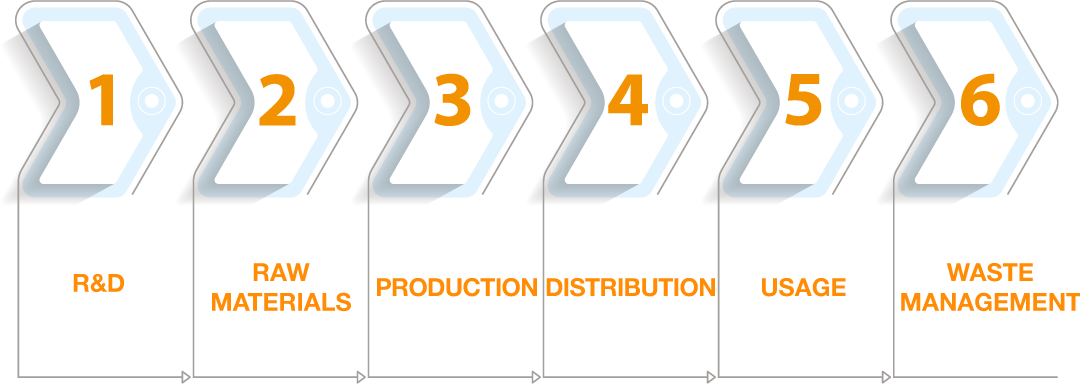
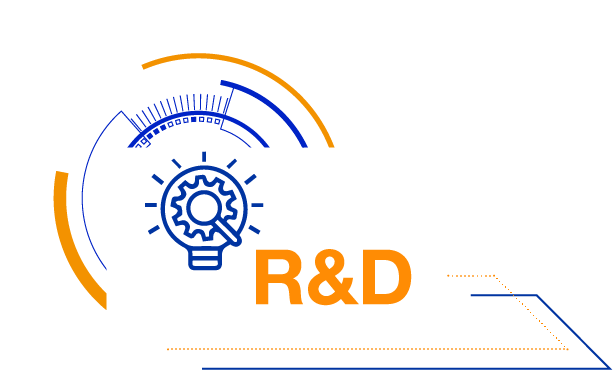
From the research phase, we analyze the effects of our products on factors such as greenhouse gas emissions, water, soil health, and biodiversity. Based on our understanding of these impacts, we create products that are more environmentally friendly and beneficial for farmers.
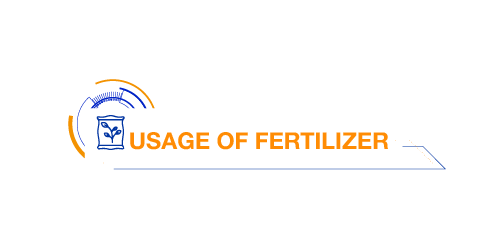
The use of fertilizers has certain impacts on the environment, water, soil, biodiversity, and particularly climate change. Improper fertilizer use can also produce greenhouse gas that affect the ozone layer. We have implemented and will continue to implement measures to enhance farmers’ understanding and sustainable fertilizer use practices, thereby minimizing environmental impacts.
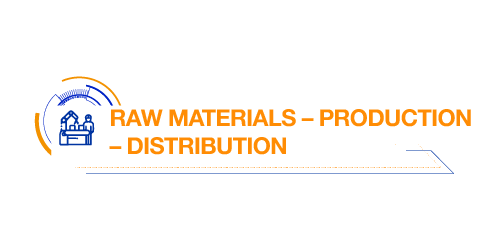
We understand the environmental impact of using raw materials and other effects during production. Our main raw material is natural gas. During production, we use electricity and some natural gas as fuel. The production process generally involves raw material usage and energy consumption, which results in greenhouse gas emissions, production waste, and cooling water usage.
Therefore, we set annual targets to save on raw materials and enhance energy efficiency in production. PVCFC implements a series of initiatives to improve raw material efficiency and reduce the average energy consumption per product. Additionally, product distribution generates emissions from transportation, as products are shipped long distances to dealers and farmers by ships and trucks. A small amount of fertilizer may be lost during handling, transportation, and storage, which could lead to leakage and environmental pollution. Consequently, PVCFC has made substantial investments in warehouse systems in key areas and developed secondary distribution systems to reduce the distance to consumers.
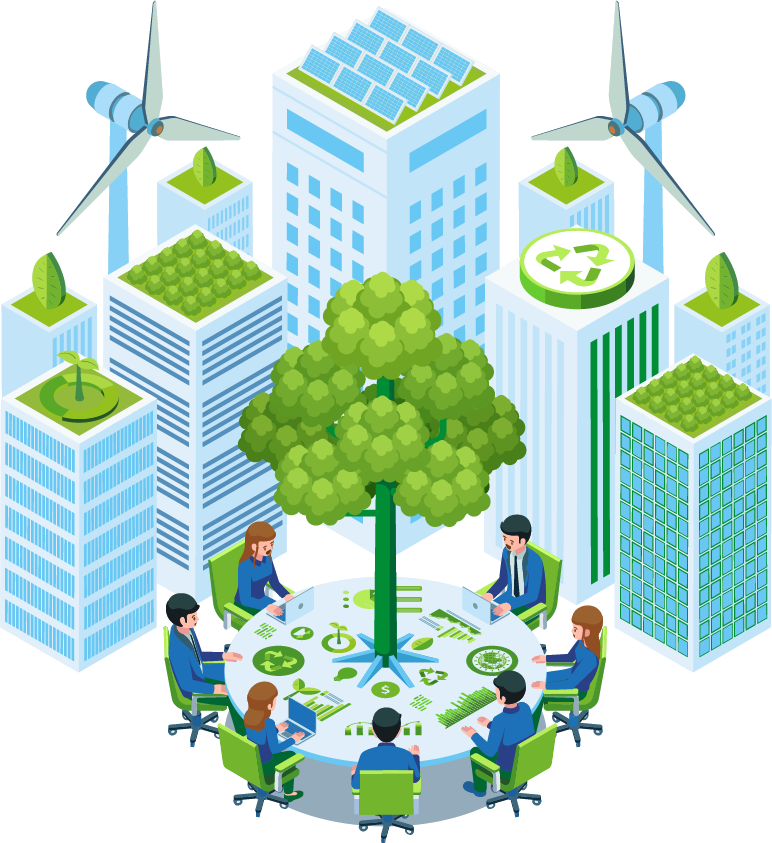
We are in the process of analyzing and managing the impacts of waste within our value chain. We have managed and treated waste during production in compliance with legal regulations. We are also studying the environmental impacts of waste generated from fertilizer use, including the effects of fertilizer packaging on the environment and society.

Based on our analyses, we have developed the basic framework for PVCFC’s SD strategic direction as follows:. The SD strategic framework is a set of strategic initiative directions under the pillars of Environment, Social, and Governance, aligned with the company’s overall operational strategy. These pillars are presented as major themes that guide the company’s SD activities to ensure the integration of SD content in the implementation of general strategies and operations. PVCFC’s SD strategic framework, approved by the Board of Directors, ensures the effective implementation of the company’s business strategy while considering four key factors:
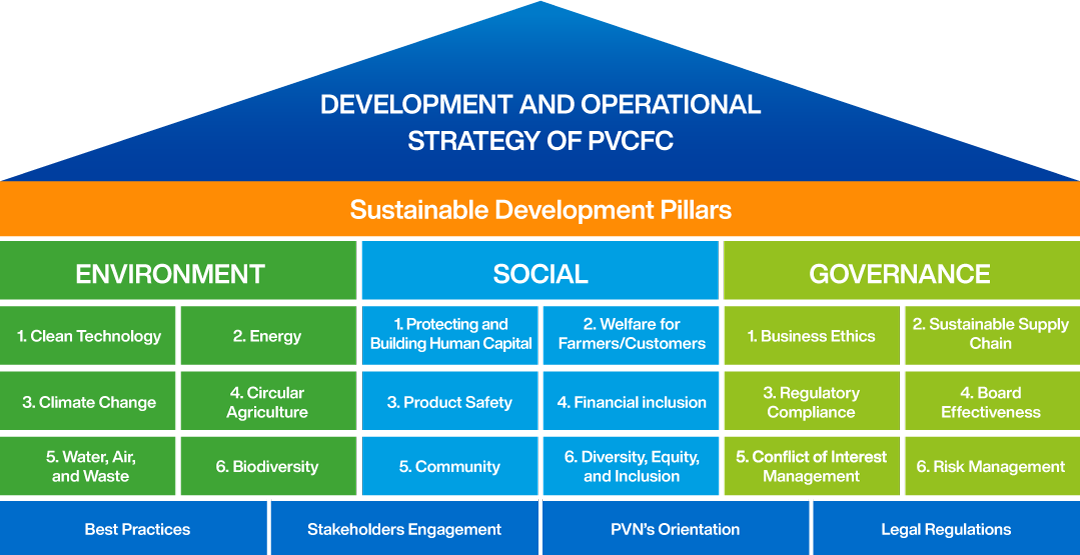
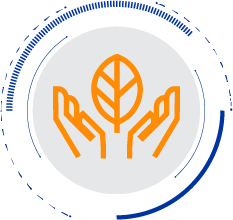


PVCFC is committed to practicing corporate governance at the highest level possible, including but not limited to good corporate governance practices in Vietnam and ASEAN. Key governance areas in ESG include: